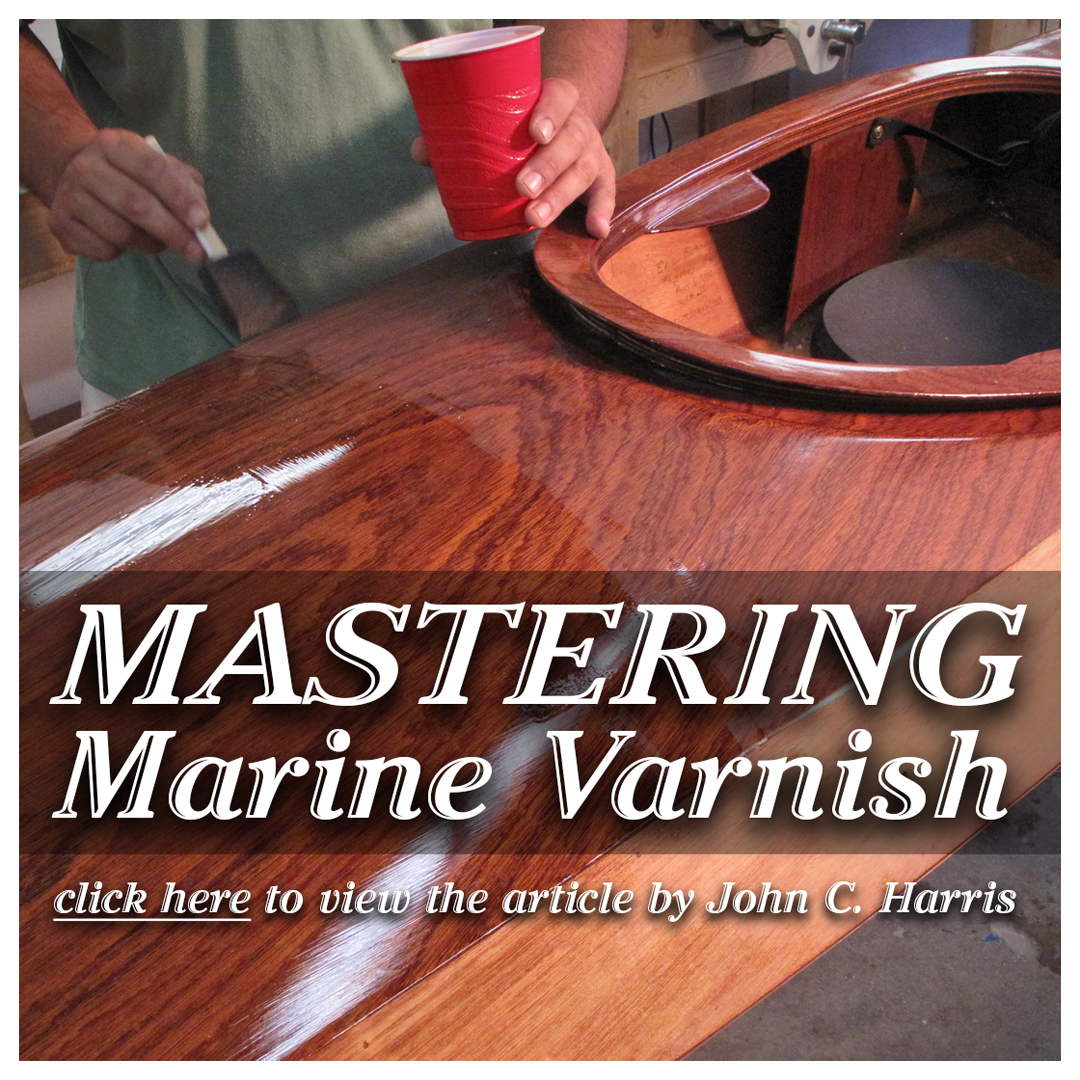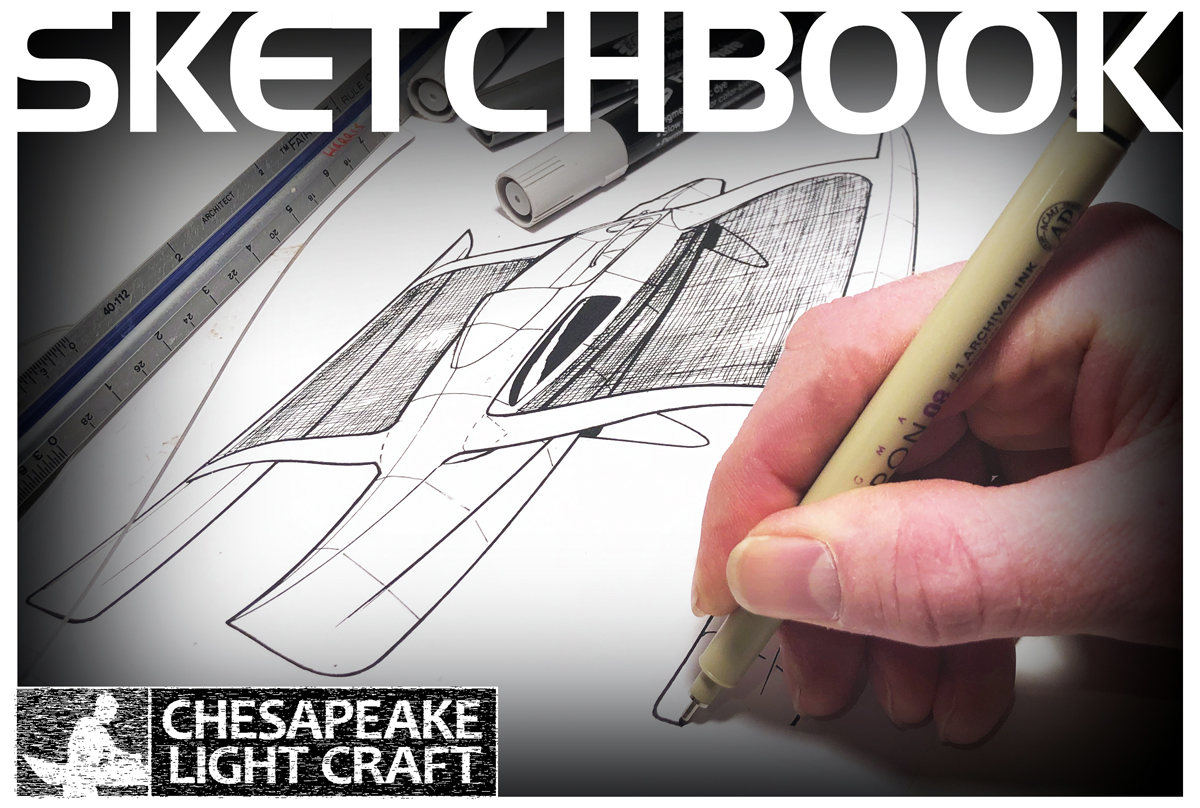Builders' Forum |
|
| ↓ Scroll to Last Comment ↓ | Forum Guidelines | Builders' Forum | |
I am building a Skerry, and I'm about to do the fillets, between the frames and the panels. The manual suggests:
- 12 oz of epoxy + wood flour, with some silica for smoothness.
- Put this in a pastry bag (heavy ziploc bag) with a corner cut out.
I'd appreciate advice on how to proceed with this step. I have a few concerns with the advice from the manual. First, my previous experiences mixing 12 oz of epoxy have not been good. I ended up with a very hot hockey puck. Is this less of a concern due to the wood flour and silica being added?
Second: a ziploc bag? Really? I wonder whether even the heavy duty bags are strong enough. Especially with a corner cut out, I would expect the bag to split open, creating an absolutely enormous mess.
10 replies:
RE: Fillets
I just re-read my post and realize I didn't make one thing explicitly clear. Empty the whole bag BEFORE taking the time to tool anything. As long as your are working even relatively quickly you'll have plenty of time for tooling. Heck, tooling often even goes a little better as things begin to firm up just a little bit.
RE: Fillets
Fillers - any fillers, alone or in combination - tend to act as insulation & will speed up epoxy curing.
If you're uncomfortable about using 12 oz. in a single batch, start with 6.
Or 4, or even 3 untill you gain confidence & proficiency with placement & subsequent tooling / finish coat of fresh, unthicked epoxy as a final step.
RE: Fillets
I am one of those people that just doesn't get along with the plastic bag method. The bag split, the epoxy kicked and it was a mess everywhere.
On the other hand a freehand application with a rounded putty knife is fast, easy and precise for me. So that's what I do.
While some may say that with only a single try I didn't give it a fair chance, I had a method that worked and it didn't make sense to waste more epoxy to learn a second one.
I know that the bag method works for a lot of people, but I'm not one of them. This is just to say that I really see the validity of geophile's concerns and that it's legitimate to consider alternatives.
Laszlo
RE: Fillets
I am with Lazlo with this one. Small batches of epoxy, spread carefully with the proper tool, and you are golden. Epoxy takes some time to completely harden, you can keep mixing up 4 and 6oz batches as needed and make them all as smooth as butter when you turn them into a fillet.
RE: Fillets
Thank you for all the responses. I now have more questions, after a few hours of experimentation.
I decided to pursue the approach described by Laszlo and Art Haberland. I experimented on a seam that will not be visible, between the stern frame and the panels, just inside the stern of the boat (this area will be covered by a seat).
Attempt 1 was a failure. I used a 1 1/2" putty knife, and I just couldn't get the epoxy where it was supposed to go, on the seam where the two surfaces met. Then I realized that Laszlo mentioned a ROUNDED putty knife.
I tried attempt 2, with a rounded paint stirrer. That worked much better. But I still had trouble getting the epoxy where it was needed. I tried pouring it out of the cup, at the topmost point, and then relying on gravity, and my rounded tool to spread the epoxy. I also tried scooping up epoxy (with the tool) and then applying it to the seam, but that seemed pretty messy. I managed to get that entire seam covered, but I don't feel that I have a good procedure worked out yet.
One major question I have is about the epoxy itself. How thick should it be? As I noted above, I was able to pour the epoxy. It was pretty thick, like a very thick maple syrup. The manual says "peanut butter consistency", but is that like Skippy (not pourable at all)? Or like an organic peanut butter (thicker than maple syrup, thinner than Skippy)?
Second major question: Once I have the right consistency, how do I apply the epoxy to the seam? Put a big hunk of it in one spot and then spread/smooth it? (I don't want to switch to the pastry bag approach, but that technique seems to have an advantage for getting the epoxy along the seam initially.)
RE: Fillets
Your mix sounds way too thin. Filet mix should never be pourable, it should be like stiff peanut butter or mashed potatoes, able to stand up on its own in a peak that might only slowly slump back down into a more rounded lump over a minute or two of time. On all but vertical seams a good mix should be able to basically hold itself in place once it is formed into filet shape. Filets will sag a bit the thicker they are and the more vertical they get, that is why you should plan to spend up to an hour or so after making filets with a glove and alcohol wet finger checking and re-forming any that don't want to stay in shape as the epoxy firms up. As you check them every 10-15 minutes you'll find the time that the epoxy is perfect for the final forming/smoothing.
I did do most all of my whole first boat (NE Dory) using a filet tool (like large popsicle stick, end radius matching the size needed for the filet) and a cup to make the filets, as described by Laszlo, and still do the big-fill areas that way - like when there is a designed-in gap to fill in some designs where seat bulkhead frame meets hull, etc..
Something like a 1/2 inch radius (a rounded end on a 1 inch wide stick) is a good "medium" sized radius for filets. Parts that meet at right angles use a smaller radius than parts that meet at obtuse angles.
To each his/her own, but as I began to use the bag method I was able to get the epoxy spread much more evenly and quickly, with less excess drips, blobs, etc. to clean up. With the spatula/tool application method it took me longer to do x feet of seam than with a bag, and there just seemed to be much more clean-up scraping to do everywhere else near the filet itself. And as I said in the previous post, good attention to clean up (scrape away all epoxy that isn't the filet itself) and filet forming while everything is soft saves a huge amount of time.
Have you tried watching some videos on this site or you-tube? Very highly recommended that you do. The basic "how to build a kayak" video is a good start, it shows all the basic skills needed, and perhaps the original (to CLC, at least) "viking funeral."
Back to the beginning, you'll never make a good filet with runny/pourable epoxy mix.
RE: Fillets
Bubblehead, thank you, that information about the thickness of the epoxy is very helpful.
Thanks also for the reminder about the videos. I see that most of them are no longer present?! But under the Tips section, I did see the idea about using masking tape to simplify cleanup. That looks useful if I stay with my decision about not using pastry/ziploc bags.
RE: Fillets
Bubblehead is absolutely right, that mixture is too thin.
Again, I have no doubt that the bag method works, and works really well, for some people so I'm not discouraging it at all. It just doesn't work for me, at least not well enough to make me want to invest time and epoxy to get better at it.

Here's my filleting tools with the radius trimmed for 4 to 6 oz. glass (US 5-cent coin for scale). The heavier the glass, the greater the needed radius.

Here's the fillet they produce. It's the minimum width needed to fully support the glass tape, so the epoxy consumption and boat weight stay low.
Bubblehead's descriptions of wiping the excess from the tools into a cup and reusing it is spot on. I also only mix a few ounces at a time, just as Art says. The main benefit of that is smaller catastrophes if they do occur and less wate overall.
Another thing to deal with are the ridges that form each side of the fillet. My preference is to lay down the main fillet, then use the unrounded putty knife to scrape up the ridges and return them to the cup for re-use. Or at the very least, get them out of the boat before they turn into a sanding problem.
I also smooth the fillets after they're down, but instead of alcohol and a finger I use unthickened epoxy and a chip brush. The reasons for my choice is that I know for an absolute fact that there won't be a chemistry compatibility problem no matter what brand of epoxy I use, it's faster than a finger and it lets me apply enough force to smooth and shape the fillet into its finished form in one pass. The resulting fillet is glass smooth. Bubblehead is right - when you get the hang of either this or his alcohol method, all you need is a scuff-sanding to prepare it for paint/varnish.
For a taped fillet, put the glass down as soon as the fillet is complete and smoothed. I like to pre-impregnate the tape with epoxy by rolling it up, putting it into a container filled with epoxy, letting it soak it up, then massaging the rolled-up tape until it's fully saturated, squeezing out the extra for re-use on the next strip and finally unrolling the tape onto the fillet and smoothing it into place. Done right, this results in perfect saturation, no excess epoxy, no floating and most importantly, no drips to sand.
Finally, be aware that putting masking tape down along the edges of the fillets will result in ridges that need to be sanded unless you remove the tape while the putty is still soft and then smooth the edges. I find that too much trouble and material so I skip the adhesive tape and just use the flat putyy knife to clean things up. It's like experienced house painters never using masking tape.
Just as with cooking, each boatbuilder "chef" has their own recipes and tricks. Everyone should at least try each one once because you will always learn something, just maybe not what you thought.
Have fun all,
Laszlo
RE: Fillets
Thank you all so much for your advice! I did most of the fillets between the frames and panels today, as follows:
- Masking tape on either side of the seam.
- Mixed epoxy with wood flour, much thicker than I had been doing. (I'd characterize it as organic peanut butter.)
- Applied the epoxy with an old dinner knife that has a nice rounded end.
- Used the rounded end to shape the fillet.
- Removed the tape.
- Final cleanup using the knife again.













RE: Fillets
» Submitted by Bubblehead - Mon, 5/15/23 » 1:30 PM
Tough call - one of those things that takes practice. Work in as cool an area as you can achieve with time of day considerations, etc. Also with initially cool epoxy - read other discussions on that topic. Ziplock bags work fine, but aren't as nice to use as pastry bags. CLC sells those and maybe a local cake shop will help you out. The ziplock bag seams can split, but probably won't if you don't get overly agressive with squeezing. Whatever you use, you can fold over the bag tip an inch or more above where you intend to cut, then place the bag down in a cup with "mouth" folded over the edges, ready to receive your mixed epoxy. When you lift out the bag, there will be a little air bubble in the tip you can snip off without getting epoxy on the scissors. The hole size you need at the tip is usually smaller than you might think.
I'd say my biggest hint is to plan every move, make sure all lights, spatulas, fairing tools, etc. are ready to go, and you know exactly what areas you think you'll be able to filet with that bag full, and have a plan to move from x to y to z as you do them. Mix your epoxy first, then add fillers, in each step stirring vigorously only long enough to ensure a good mix (but do ensure a good mix). MOST IMPORTANTLY, get a feel for how much filet material is required based on filet radius, etc., and then lay the bead in using long smooth motions, not trying to get it perfect or stopping to dab here and there. The filet tool will level out slightly thicker or thinner areas in the bead. Once the filet material is out of the bag, you'll have a MUCH longer working time. I do add the caution that you must leave enough time to tool each bead prior to it setting, but you'll have much longer than you think. Try to avoid using too large of bead, only enough to form the filet withoug having to return to much to your "waste" cup - you'll need your filet tool in one hand and a cup in the other when forming the filet. Wipe your tool on the edge of the cup to remove excess before you start forming large "side lines" of filet material along the outside edge of the radius of the filet. If the stuff in the waste cup is still soft by the time you've tooled your filets, it can usually be put to good purpose in some nook or cranny that will need filling elsewhere on the boat - just be carefull not to create any lumps that you'll later need to filet over, as those cause difficulty forming a nice smooth filet.
Start will less-full bags and work your way up to more volume. The reason I say this is that the larger batch you are able to use in one bag full, while still being able to use it all before it cooks off/hardens, the less loss you'll have due to leftovers in the bag. Every time you use a new bag you do end up with some waste left in the bag. Of course not as much waste as cooking off a big remainder in the bag, so there's a delicate balance that only a wall thermometer in your shop and some experience will help you to achieve.
Two final notes: Good filet techniques that avoid too much subsequent sanding can save you hours of drudgery. Make sure you've got something like a sharp putty knife to wipe away all drips and outer-edge "seams" that might develp as you shape your filets. Also make sure you've read up on the "alcohol wet finger" method of smoothing and shaping filets while they are in the "plastic" stage, sometimes even coming back to shape them several times if there are areas that want to sage or whatever. That is huge. Honestly, if you get good at it (and even when good, there will still be occasional not-so good areas) you can create filets that require nothing other than scuff-sanding prior to subsequently coating with epoxy or paint or whatever in the later build stages.